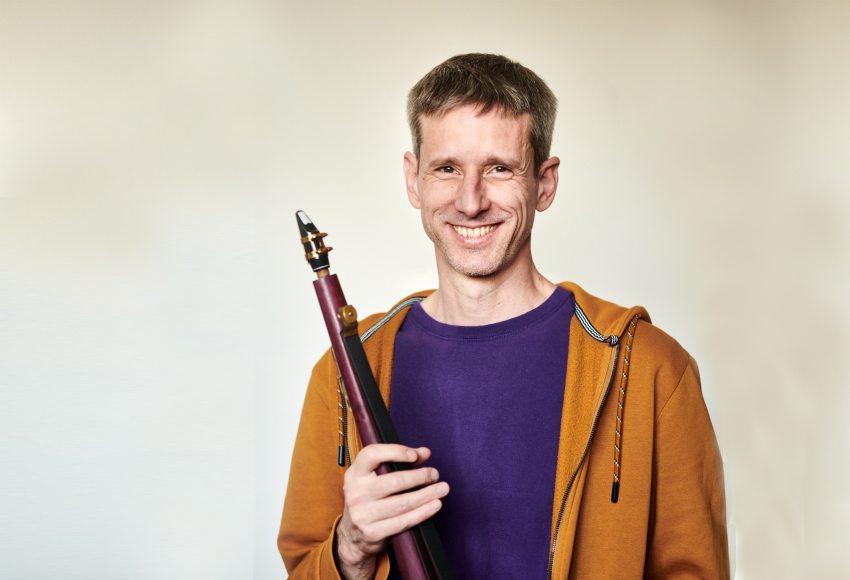Hungarian inventor wins! – We asked Dániel Váczi about the international competition for musical instrument inventors
With his first place and People’s Choice, the Hungarian contestant was the absolute winner of the Guthman Musical Instrument Competition for instrument inventors in Atlanta. We interviewed one of the designers, Dániel Váczi, about the competition, his American adventure, and the future of the Hungarian-developed instrument, the glissotar.

Are you over the jet lag yet?
Pretty much, but fortunately, it hasn't been too bad so far. The journey was quite long, though, twenty hours from door to door.
How did you like Atlanta?
An exciting city! My accommodation was in the middle of an African-American neighborhood. It was an interesting experience to look around the streets and realize I was the only white person. I lived in the suburbs for those few days, small houses, wide streets, lots of trees, and birds.
The $10,000 prize Guthman Musical Instrument Competition is an international competition for instrument inventors but I must confess I had never heard of it before. How did you get in with your own design, the glissotar?
I read about the competition in a newsletter.
Around fifty people from all over the world entered, with twenty-six qualifying for the semi-finals and ten for the final. Some of the musical inventors were American, Canadian, or Venezuelan, the rest were European.
The first two rounds took place online and all participants were invited to Atlanta for the final. This was an event at Georgia Tech University, which is a bit like the Budapest University of Technology, and the other instruments were more of an interesting fusion of technology and music, only ours was entirely acoustic. At the gala concert, all the contestants played duets with local musicians. I was very lucky to be joined by clarinetist Ted Gurch, who has been playing in the city's symphony orchestra for some thirty years but also has an interest in jazz, so was no stranger to improvisation. He was a nice man, not only picking me up at the airport but also inviting me to his family's house for lunch that weekend.
How did the competition go?
The instruments were judged by a professional jury. Gerhard Behles is the CEO of Ableton, one of the largest music software companies, and Paola Antonelli is the Senior Curator at the Museum of Modern Art in the Department of Architecture and Design in New York, she was the leading authority on design. And Rick Beato is a music professional and YouTube personality with around 3 million subscribers, who has interviewed stars such as Sting and Brian May. We were given 20 minutes to introduce our instruments, which required a presentation. The technicians were grateful that they had so little trouble with me, as the glissotar requires nothing but a microphone.
I really liked the piece you performed in the final with Ted Gurch. Is it your own composition?
We played a piece entitled Akron, which I wrote for my wife twenty-some years ago.
She was the first one you called with the good news?
You know I don’t have a mobile phone.
Oh yes. Why not?
Because I don't feel the need. It gives you a lot of freedom if you don't have one, and a lot of constraints if you do.
So you told your wife about the win first?
Yes, I contacted my family via the internet as soon as I could. Our three children and my wife watched the coverage of the gala together at home. When the people’s choice was announced, my wife thought I wouldn't win any of the prizes because everyone must only get one. Then she was even more surprised when she found out that the glissotar had won first place.
Was it with this ambition that you embarked on your American adventure?
I hoped that the competition would go well. I felt that my instrument had a lot of new features that the jury might appreciate. Although, it must be added that these instruments are difficult to compare. It's like comparing apples, oranges and bananas and then having to say which one is better. Otherwise, I have developed a very good relationship with the participants, we have done many things together and I hope we will stay in touch in the future.
How do you see the future of glissotar?
Luckily, since I came back from the competition, interested people come one after the other, and we want to continue as a business.
How many glissotars are there currently in the world besides your own?
One is with French clarinetist-composer Etienne Rolin, who ordered it a year and a half or two years ago, and has been using it enthusiastically for at least a year. A friend of mine in Venice has one, and another in Austria, and eight or nine orders are in progress at the moment.
How long does it take to make an instrument?
We have a six-month lead time for orders, but this will probably speed up over time. Tóbiás Terebessy and I have been developing Glissonic instruments together for seven years, the first of which is the Glissonic tárogató or glissotar. I have created the concept designs for the eight installations in the Creative Sound Space of the Hungarian House of Music, and the production design and construction is carried out by the Medence Group, of which Tóbiás is one of the founders. We have to hand it over by the end of April, and once this process is complete, we will be able to take on more orders.







